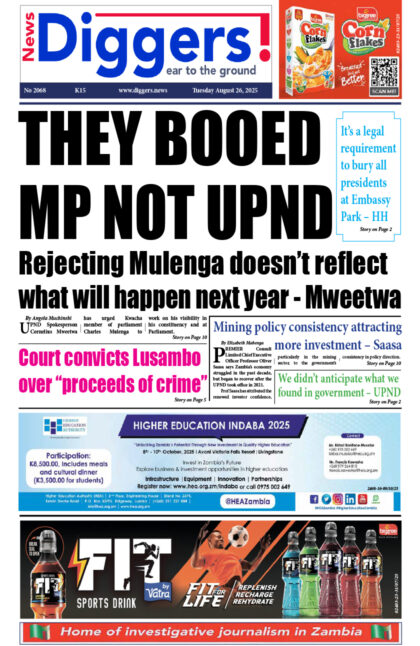Minister of Transport and Communications Mutotwe Kafwaya says the 2019/2020 rain season will cause floods in prone areas, resulting in damage to property and increased chances of disease burdens to humans, livestock and crops.
Rendering a ministerial statement to Parliament on the 2019/2020 rain season forecast, Thursday, Kafwaya said there was need for institutions to store relief materials medicines and pesticides.
“Let me state that during the current rain season, and indeed in many rain seasons, dry spells may occur which in certain circumstances will lead to crop losses. In this regard I wish to urge our farmers and other stake holders to regularly get in touch with the Ministry of Transport and Communications to access updated meteorological forecast. Mr Speaker, every rain season is characterized by wide ranging implications on all social economic sectors. In this respect, I wish to inform the nation that the 2019 /2020 rainy season is likely to experience floods and flash floods in prone areas. That may cause damage to infrastructure and we may witness increased chances of disease burdens to human livestock and crops. These experiences may include damage to civil structure such as roads and bridges. Face increased chances of disease outbreak such as cholera, dysentery and typhoid and experience outbreak of agriculture pests such as army worms,” Kafwaya said.
“That said, I wish to advise this August House and members of the public to take necessary precautions to avoid loss of lives and property should there be any extreme weather events during this rain season. There is great need for institutions to store for relief materials, medicine and pesticides that may be required in the course of the rain season.”
Kafwaya noted that the use of weather and climate information was cardinal for adapting and building resilience in the economy.
“The use of weather and climate information is also cardinal for adapting and building resilience in our economy and communities to climate variability and climate change. Furthermore, weather and climate information is important in disaster risk reduction and preparedness to extreme events such as floods and droughts which have become a common place in the recent years. Weather and climate information is equally vital for mitigating and fighting diseases against human, animals and plants,” Kafwaya said.
“Mr Speaker, we are aware that small scare farmers and rural dwellers are the most vulnerable people in our society who are negatively affected by the weather and lack of information on weather and climate. I therefore urge my colleagues in the House to take this message to people in our constituencies. In order for the people to benefit from it.”
Kafwaya said the country was likely to receive normal to above normal rainfall and it was likely to be established in mid-November.
He, however, said there was a likelihood of dry spells around February especially over the Southern half of the country.
“Much of Zambia is likely to receive normal to above normal rainfall during this rain season. The season is likely to be established in mid November over most parts of the country. Nevertheless, areas over Luapula, North Western, Copperbelt and Western Provinces are likely to experience rainfall activities by October. However this notwithstanding, there is a high likelihood of dry spells around February especially over the Southern half of the country. There is also a high chance that most of the rainfall will be received in the month of November and December in 2019 and January and March 2020,” said Kafwaya.
“The forecast for the whole season has ben segmented into four periods of three months totals, each to indicate monthly performance as the season progress as follows; For the period of October, November and December there is high chance of receiving normal to above normal rainfall for most parts of the country. However, the areas around Chama Mbala Isoka Nakonde Mbala Mpulungu Chinsali Mungwi and Lundazi districts will most likely receive normal to below normal rainfall. For the period of November December and January, Southern half of the country is likely to receive above normal rainfall while the Northern half of the country has a high chance of receiving normal to above normal rainfall. With the exception of the North Eastern areas. Where there is a likelihood of normal to below normal rainfall.”
























